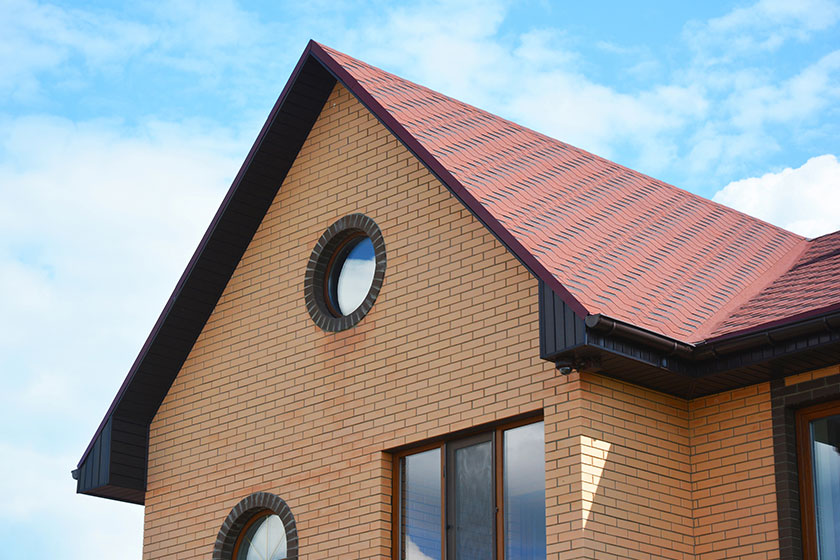Roofs have always been more than just protective coverings. Over the centuries, roofing projects have redefined the look of homes, evolved architectural styles, and influenced the overall aesthetic of neighborhoods and cities. From the functional thatched roofs of ancient times to the elegant slate rooftops of Victorian mansions, the story of roofing is deeply intertwined with cultural and technological advances.

The Roof: More Than Protection
The roof is one of the most important features of any structure, both in terms of its practicality and its aesthetic impact. The right roof can define the style of a home, enhance its curb appeal, and even increase its value. However, historically, the choice of roofing material and design has also symbolized wealth, status, and even national pride.
Throughout history, roofing projects have been central to defining the identity of a building. A well-designed roof wasn’t just about keeping the rain out—it was about showcasing craftsmanship, cultural values, and technological innovation. Let’s take a look at some of the most iconic roofing projects from history and how they transformed homes and buildings.
Top Seven Roofing Projects
The Thatched Roofs of Medieval England
In medieval England, thatched roofs were a common feature in homes across the countryside. Thatched roofs were constructed using natural materials such as straw, reeds, and heather. They are both affordable and accessible. These roofs were typically found in rural cottages and farmhouses, where their rustic charm became symbolic of country life.
However, the quality of thatching varied greatly depending on the wealth and status of the homeowner. While the less affluent used cheaper straw, the wealthier landowners opted for water reed, a more durable material that could withstand harsh weather conditions. The higher-quality thatched roofs lasted longer and provided better insulation. This makes them a sought-after feature for those looking to impress their neighbors.
Despite their humble origins, thatched roofs became a symbol of rustic elegance and influenced the design of homes in rural England and across Europe. Their cultural significance continued well into the 19th century when thatched cottages became synonymous with idealized English country life. Although they have largely fallen out of favor today, the timeless charm of thatched roofs can still be seen in some of the most picturesque villages across the UK.
The Roman Influence: Concrete and Tile Roofing
The Romans were pioneers when it came to architectural advancements, and their approach to roofing was no different. During the height of the Roman Empire, the use of concrete and tiles revolutionized the construction of roofs, particularly in large public buildings and wealthy Roman villas.
The Romans introduced a new style of roofing known as the “tegula,” which consisted of interlocking roof tiles made from fired clay. These tiles were both durable and effective in draining water. They are ideal for the Mediterranean climate. Roman concrete, known as “opus caementicium,” was also used in roof construction. It provides added stability and strength to large domes and roofs in monumental buildings.
The most famous example of Roman roofing is the Pantheon in Rome. It boasts one of the largest unreinforced concrete domes in the world. Completed around 126 AD, the Pantheon’s roof is an architectural marvel, with a massive oculus at its center allowing natural light to flood the interior. This dome is a perfect example of how the Romans used concrete to create visually striking and enduring roofs that continue to captivate visitors to this day.
The Gothic Roofs of Cathedrals
The Gothic period, which spanned from the 12th to the 16th century, was characterized by its soaring cathedrals and elaborate architectural designs. One of the most significant features of Gothic cathedrals was their pointed roofs. They allowed for taller, more dramatic structures. The use of flying buttresses also became common. This innovation made it possible to have thinner walls and larger windows. These features are now closely associated with the Gothic style.
Roofing in Gothic architecture played a critical role in both the structural and aesthetic aspects of these towering buildings. The roofs were often steeply pitched, with intricate designs that reflected the grandeur of the architecture below. The roofs were typically covered in lead, which was durable and could be molded into complex shapes. The use of stained-glass windows and intricate roofline details also contributed to the otherworldly beauty of Gothic cathedrals.
One of the most famous examples of Gothic roofing is the Notre-Dame Cathedral in Paris, completed in the 14th century. The cathedral’s distinctive roofline, with its steep slopes and soaring spires, helped create the majestic silhouette that made the structure one of the most iconic buildings in the world. The use of lead roofing, combined with the grandeur of the building, gave the cathedral its timeless appearance.
The Copper Roofs of Colonial America
By the 17th and 18th centuries, the use of copper became a popular choice for both residential and commercial roofing. Copper was particularly prized for its durability, corrosion resistance, and ability to develop a beautiful patina over time. In colonial America, copper roofs were often used in the construction of government buildings, churches, and private estates.
One of the most famous examples of a copper roof in early American architecture is the dome of the Massachusetts State House in Boston, completed in 1798. The roof of the State House was covered in copper sheets. This gives it a distinctive greenish hue as the copper oxidizes over time. The copper roofing project also became a symbol of the growing power and wealth of the new American republic.
Copper roofs also became popular in New England. This is where they were used on both private homes and public buildings. The material’s ability to weather beautifully over time made it a desirable choice for those looking to create lasting, visually appealing roofs that would stand the test of time.
Victorian Slate Roofs: A Mark of Prestige
In the 19th century, the Industrial Revolution ushered in a new era of architectural design, and the use of slate roofing became popular in Victorian homes. As the era of ornate homes and grand mansions flourished, slate roofing became a hallmark of wealth and prestige.
Victorian homes, particularly those built during the Gothic Revival and Queen Anne periods, often featured visually stunning slate roofs. Slate’s natural beauty and durability made it an ideal choice for the intricate roofing designs of the time. It often featured complex patterns and angles.
One famous example is the Biltmore Estate in Asheville, North Carolina, built by George Washington Vanderbilt II in the 1890s. The mansion’s slate roof, which was sourced from local quarries, was an integral part of the home’s grandeur. The roof was designed to complement the mansion’s ornate architectural details. It helped create the striking silhouette that the estate is known for today.
Victorian slate roofs were often arranged in multiple colors and patterns to create a unique, eye-catching effect. The expense of installing a slate roof meant that only the wealthiest homeowners could afford this luxury. This further solidified the association between slate roofing and high social status.
Frank Lloyd Wright’s Low-Slung Roofs: The Prairie Style
In the early 20th century, one of America’s most influential architects, Frank Lloyd Wright, revolutionized architectural design with his Prairie Style homes. Characterized by low, horizontal lines and open floor plans, Wright’s designs aimed to create harmony between the built environment and nature. One of the most important elements of Wright’s Prairie Style homes was the roof.
Wright’s roofs were typically wide and overhanging, designed to blend seamlessly with the surrounding landscape. These roofs often featured cantilevered designs. They’ve created dramatic overhangs that protect the interior from the elements while adding a sculptural quality to the building. Wright’s use of flat or gently sloping roofs was a significant departure from the steep, gabled roofs common in the period.
One of Wright’s most famous works, Fallingwater, completed in 1939, features a series of flat, cantilevered roofs that seem to float above the house, almost as if they are part of the natural surroundings. The innovative roofing design reflected Wright’s aesthetic principles and challenged traditional notions of what a roof should be.
Fallingwater’s design helped redefine the role of the roof in modern architecture. This showed that a roof could be both functional and artistic. The integration of the roof with the surrounding environment became a hallmark of Wright’s work, influencing generations of architects to come.
The Flat Roof Revolution: Modernism and Bauhaus
In the early 20th century, the rise of modernist architecture, particularly the Bauhaus movement in Germany, marked a significant departure from traditional roofing styles. Modernist architects embraced simplicity and functionality, and the flat roof became a key feature of this new approach to design.
The Bauhaus school, founded by Walter Gropius in 1919, was one of the primary institutions promoting the use of flat roofs. The school’s building, designed by Gropius and completed in 1926, featured a flat roof that symbolized the modernist ideals of practicality, minimalism, and industrialization. The flat roof allowed for the use of rooftop gardens and additional living space, which were both innovative ideas at the time.
Flat roofs were seen as a departure from the ornate, steep roofs of the past, and they allowed for a new kind of architecture—one that was more closely tied to industrialization and the demands of modern life. This style influenced the design of homes, office buildings, and even government structures. Therefore, the flat roof became a defining characteristic of mid-20th-century modernism.
Roofs: Defining a Home’s Identity
From ancient thatched cottages to modernist flat roofs, roofing projects throughout history have been more than just about shelter. They’ve been a reflection of societal values, technological progress, and architectural creativity. Each era brought with it new materials, techniques, and styles, but one thing remained constant: the roof was always central to defining a building’s identity.
As time progresses, we continue to see new innovations and trends in roofing, but the historical transformations in roofing serve as a reminder of how far we’ve come—and how the roof will always remain a key element of the home.
WeatherSeal: Mastering Roof Replacements with Style
Your home also deserves a roof that combines durability, beauty, and innovation. WeatherSeal Home Services brings over a decade of expertise to every roof replacement in Ohio and Pennsylvania. Whether you’re looking for the classic appeal of asphalt shingles or the modern elegance of metal roofing, we offer solutions that will transform your home’s look while providing unmatched protection.
Call (330) 920-4494 today for a free quote and discover how we can turn your roofing project into a masterpiece.








